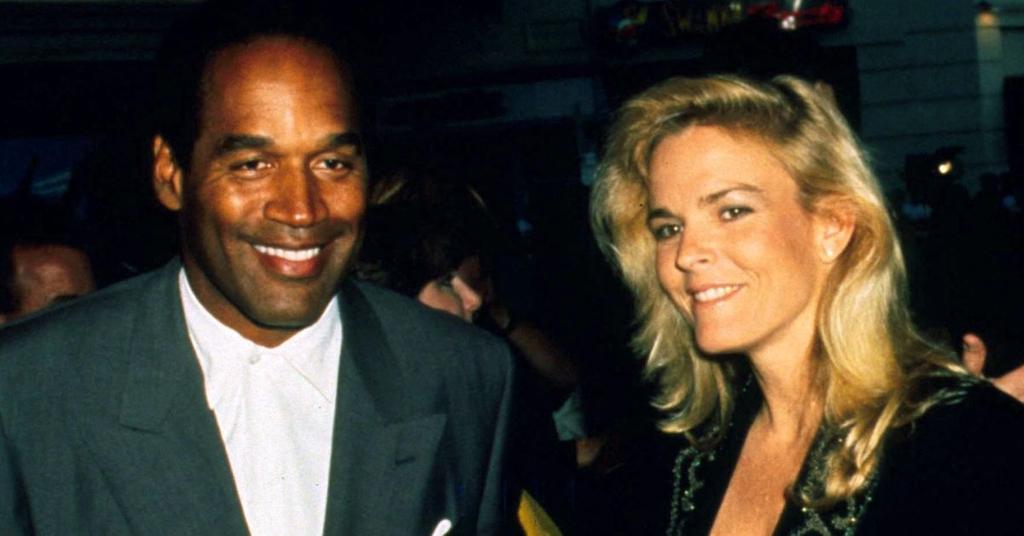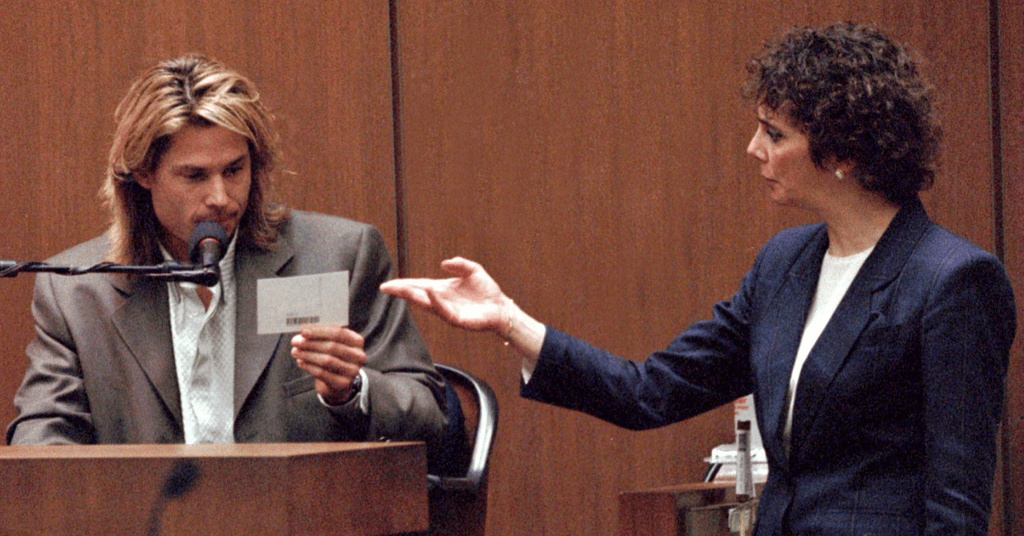Unveiling The Truth: Crime Scene Photos Nicole Brown Simpson And Ron Goldman
Crime scene photos of Nicole Brown Simpson and Ron Goldman have long been a subject of fascination, controversy, and intense scrutiny. The brutal double murder that took place on June 12, 1994, shook the nation to its core. It wasn't just the gruesome nature of the crime but the high-profile individuals involved that made it one of the most talked-about cases in modern history. From the moment the crime was discovered, the media circus began, and the world was glued to every detail that emerged.
This case is more than just a tragic event; it's a complex web of relationships, evidence, and unanswered questions. As we delve into the crime scene photos Nicole Brown Simpson and Ron Goldman, we aim to provide a comprehensive look at the events that unfolded, the evidence collected, and the impact it had on the justice system. This article isn’t just about the photos—it’s about understanding the broader context of the case.
While the crime scene photos remain a sensitive topic, they play a crucial role in understanding the investigation process. From bloodstains to the placement of objects, these images tell a story that words often can’t capture. But before we dive deep, let’s set the stage and explore the background of this infamous case, the people involved, and the lasting legacy it left behind.
Read also:Araw Ng Davao 2024 A Celebration Of Culture Unity And Joy
Table of Contents
- Biography of Nicole Brown Simpson and Ron Goldman
- Overview of the Crime
- Importance of Crime Scene Photos
- Details of the Investigation
- Key Evidence in the Case
- Court Proceedings and Public Reaction
- Psychological Impact on Families
- Media Coverage and Public Fascination
- Ethical Considerations of Crime Scene Photos
- The Legacy of the Case
Biography of Nicole Brown Simpson and Ron Goldman
Nicole Brown Simpson and Ron Goldman were two individuals whose lives tragically intersected on that fateful night. Below is a brief biography of both victims, providing context to their lives before the crime.
Nicole Brown Simpson
Nicole Brown Simpson was born on December 10, 1959, in Salt Lake City, Utah. She was a model and socialite who captured the attention of many with her beauty and charm. Nicole met O.J. Simpson in 1977, and their relationship blossomed over the years. They married in 1985 and had two children together, Jason and Sydney. However, their marriage was fraught with tension and allegations of domestic violence, leading to their divorce in 1992.
Ron Goldman
Ron Goldman was born on March 1, 1965, in Los Angeles, California. He was a talented waiter, bartender, and aspiring actor. Ron worked at the Mezzaluna restaurant in Los Angeles, where he became friends with Nicole Brown Simpson. On the night of the murder, he was visiting Nicole at her home in Brentwood, California, to return a pair of glasses she had left at the restaurant.
| Name | Date of Birth | Occupation | Relationship to O.J. Simpson |
|---|---|---|---|
| Nicole Brown Simpson | December 10, 1959 | Model, Socialite | Ex-wife |
| Ron Goldman | March 1, 1965 | Waiter, Bartender, Aspiring Actor | Friend of Nicole |
Overview of the Crime
The murders of Nicole Brown Simpson and Ron Goldman occurred in the early hours of June 12, 1994, outside Nicole's home in the affluent Brentwood neighborhood of Los Angeles. Both victims were found stabbed to death, and the crime scene was shocking in its brutality. The case quickly gained national attention due to the high-profile nature of the victims and their connection to O.J. Simpson, a former NFL star and actor.
The investigation into the murders was intense, with detectives meticulously collecting evidence from the crime scene. Among the evidence were bloodstains, a bloody glove, and fibers that would later become central to the prosecution's case against O.J. Simpson. The crime scene photos played a pivotal role in piecing together the events of that night.
Importance of Crime Scene Photos
Crime scene photos are an essential part of any investigation, and the Nicole Brown Simpson and Ron Goldman case is no exception. These images document the exact state of the crime scene as it was found by law enforcement. They capture details such as the positioning of the bodies, the presence of bloodstains, and the location of potential evidence.
Read also:Adidas Store South Beach Miami Your Ultimate Guide To Sneaker Heaven
For investigators, these photos serve as a visual record that can be revisited and analyzed long after the crime scene has been processed. In the case of Nicole and Ron, the photos provided critical clues that helped build the case against the accused. However, they also sparked ethical debates about the use and dissemination of such graphic images.
Details of the Investigation
The investigation into the murders of Nicole Brown Simpson and Ron Goldman was one of the most high-profile in U.S. history. Detectives from the LAPD worked tirelessly to gather evidence and piece together the events leading up to the murders. Among the key details uncovered during the investigation were:
- Bloodstains found at the crime scene matched the DNA of both victims and O.J. Simpson.
- A bloody glove was discovered near the bodies, which later became a focal point during the trial.
- Fibers from a sock found at O.J. Simpson's home matched those of Ron Goldman's shirt.
- Footprints and shoe impressions at the crime scene were consistent with shoes owned by O.J. Simpson.
These details, captured in part through crime scene photos, formed the backbone of the prosecution's case against O.J. Simpson. However, the defense team would later challenge the validity of this evidence, claiming contamination and mishandling by law enforcement.
Key Evidence in the Case
The evidence collected from the crime scene was extensive and included physical items, DNA samples, and photographic documentation. Some of the most significant pieces of evidence included:
- The infamous bloody glove, which became a symbol of the trial's controversies.
- Blood samples that matched the DNA profiles of Nicole, Ron, and O.J. Simpson.
- Footprints and shoe impressions that linked the suspect to the crime scene.
- Fibers and hairs that were matched to clothing and items belonging to the victims.
Crime scene photos were instrumental in presenting this evidence in court, allowing jurors to visualize the crime scene and understand the prosecution's arguments. However, the defense successfully cast doubt on the integrity of this evidence, leading to one of the most controversial verdicts in legal history.
Court Proceedings and Public Reaction
The trial of O.J. Simpson, often referred to as the "Trial of the Century," captivated the nation and the world. It was a media spectacle that played out on television screens across the globe. The prosecution presented a compelling case based on physical evidence, including the crime scene photos, but the defense countered with allegations of police misconduct and evidence tampering.
The verdict, delivered on October 3, 1995, found O.J. Simpson not guilty of the murders. The decision sparked widespread reactions, with many questioning the fairness of the trial and the reliability of the evidence. The crime scene photos and other visual evidence played a significant role in shaping public opinion, both during and after the trial.
Psychological Impact on Families
The impact of the crime scene photos and the subsequent trial was profound, particularly for the families of Nicole Brown Simpson and Ron Goldman. The constant exposure to graphic images and the relentless media coverage took a toll on their emotional well-being. Family members had to relive the tragedy repeatedly as the case unfolded in court and in the media.
Crime scene photos, while crucial for investigations, can also be deeply distressing for those connected to the victims. The ethical considerations surrounding their use and dissemination are ongoing debates within the legal and journalistic communities.
Media Coverage and Public Fascination
The media coverage of the Nicole Brown Simpson and Ron Goldman murders was unprecedented. Every detail, from the discovery of the bodies to the final verdict, was dissected and analyzed by journalists and commentators. The crime scene photos were a focal point of this coverage, with media outlets carefully balancing the need to inform the public with the ethical obligation to respect the victims' dignity.
This case highlighted the complex relationship between the media, the legal system, and the public. It also raised questions about the role of crime scene photos in shaping public perception and influencing the outcome of high-profile cases.
Ethical Considerations of Crime Scene Photos
The use of crime scene photos raises important ethical questions about privacy, consent, and the impact on victims' families. While these images are vital for investigations, their dissemination can be harmful and invasive. The Nicole Brown Simpson and Ron Goldman case serves as a poignant reminder of the need for responsible handling of such sensitive material.
Law enforcement agencies and media outlets must weigh the public interest against the potential harm caused by releasing graphic images. Striking this balance is crucial to maintaining public trust and upholding ethical standards in journalism and law enforcement.
The Legacy of the Case
The murders of Nicole Brown Simpson and Ron Goldman and the subsequent trial left an indelible mark on the American legal system and public consciousness. The case highlighted issues of domestic violence, race, and the justice system's ability to deliver fair outcomes. Crime scene photos played a significant role in shaping the narrative of the case, both during the trial and in the years that followed.
As we reflect on the legacy of this case, it's important to remember the human cost behind the headlines. Nicole and Ron were more than just victims in a high-profile murder case; they were individuals whose lives were tragically cut short. The crime scene photos serve as a stark reminder of the importance of justice, accountability, and respect for the victims and their families.
Conclusion
The crime scene photos of Nicole Brown Simpson and Ron Goldman remain a critical component of one of the most infamous cases in American history. They provide a window into the events of that tragic night and the subsequent investigation. However, they also raise important questions about ethics, privacy, and the impact on those left behind.
We encourage you to share your thoughts on this article and explore other content related to true crime and the justice system. By engaging in thoughtful discussions, we can continue to learn from the past and strive for a more just and equitable future.
Article Recommendations


